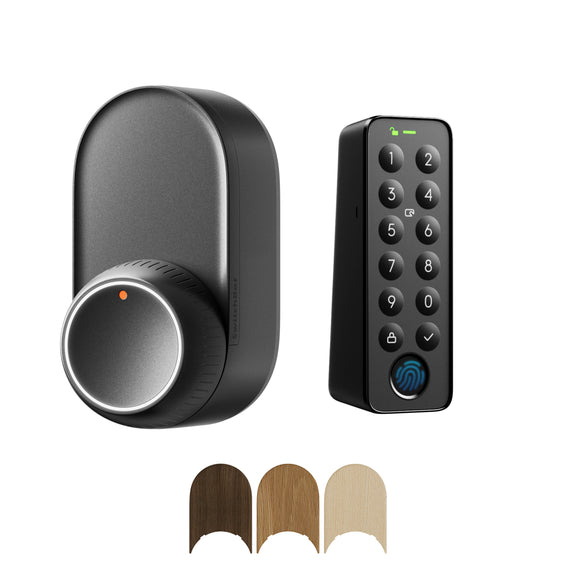Unlock the Secret to Ultimate Home Security with This One Simple Upgrade!
In an age where home security is becoming increasingly paramount, ensuring that your living space is safe and secure should be on everyone’s agenda. From petty thefts to more serious break-ins, the threats to our homes are ever-present, making it essential to adopt effective measures to safeguard our properties and loved ones. Traditional locks, while useful, may not provide the level of security and convenience needed in today’s fast-paced world. Enter the keypad lock—a modern solution that not only enhances your home security but also simplifies access for you and your family. With no keys to lose or forget, a keypad lock could very well be the upgrade you didn’t know you needed.

Understanding Keypad Locks
A keypad lock is an electronic locking mechanism that requires a numerical code to unlock the door, rather than a physical key. These locks can be installed on both residential and commercial properties and often come in various designs and functionalities. There are primarily two types of keypad locks: standalone locks that operate independently and smart locks that connect to your home network. Standalone locks are simpler and ideal for those who prefer basic security features, while smart locks offer advanced options, including remote access via smartphones, integration with home automation systems, and usage tracking. Understanding these options is crucial to choosing the right lock for your needs.
Benefits of Installing a Keypad Lock
One of the most significant advantages of using a keypad lock is convenience. With no keys to carry, you can easily enter your home with just a code—perfect for those who frequently juggle bags or young children. Furthermore, keypad locks offer enhanced security features, such as the ability to change access codes easily, which can be a lifesaver if you suspect that someone may have obtained your code. They also eliminate the risk of losing keys or having them stolen, which can compromise your home’s safety. Many keypad locks are equipped with features like backlit keypads for easy use at night, and some even provide alerts if someone attempts to tamper with them. All these factors make keypad locks a superior choice compared to traditional locks.
How to Choose the Right Keypad Lock for Your Home
When selecting the best keypad lock for your home, consider several factors. First, assess the security level you require; if you live in a high-crime area, opt for a lock with advanced security features. Installation type is another critical factor—some locks are simple to install and can be done as a DIY project, while others may require professional assistance. Additionally, take into account your personal preferences: do you prefer a standalone lock, or would you like smart features such as remote access? Reading user reviews and seeking recommendations from friends can also guide your decision-making process. It’s essential to find a lock that not only meets your security needs but also aligns with your lifestyle.
Installation and Maintenance Tips
Installing a keypad lock can be a straightforward process, especially if you are comfortable with basic tools. Start by removing your existing lock, then follow the installation instructions provided with your keypad lock. Ensure that the lock is aligned correctly and test it several times before finalizing the installation. Regular maintenance is vital to ensure the lock remains in good working condition. Keep the keypad clean and free from debris, and periodically check the batteries if your lock is battery-operated. Some locks may require software updates, especially smart locks, so be sure to stay informed about any necessary updates to keep your lock functioning optimally.
Common Misconceptions About Keypad Locks
Despite their growing popularity, several misconceptions about keypad locks persist. Many people worry that keypad locks are less secure than traditional locks, fearing that someone might easily guess or hack the code. However, most modern keypad locks come equipped with features like random number generation and lockout modes after several failed attempts, significantly boosting their security. Another common myth is that keypad locks are difficult to use, but in reality, they are often more straightforward than fumbling with a set of keys. By addressing these misconceptions, individuals can make more informed decisions about their home security options.
Improving Home Security with Keypad Locks
In summary, upgrading to a keypad lock can significantly improve both the security and convenience of your home. By understanding the various types of keypad locks available, their benefits, and how to choose the right one for your needs, you can make an informed decision that suits your lifestyle. The convenience of keyless entry, coupled with enhanced security features, makes keypad locks an excellent investment for any homeowner. Don’t hesitate to consider this simple but effective upgrade for your peace of mind and the safety of your loved ones.








